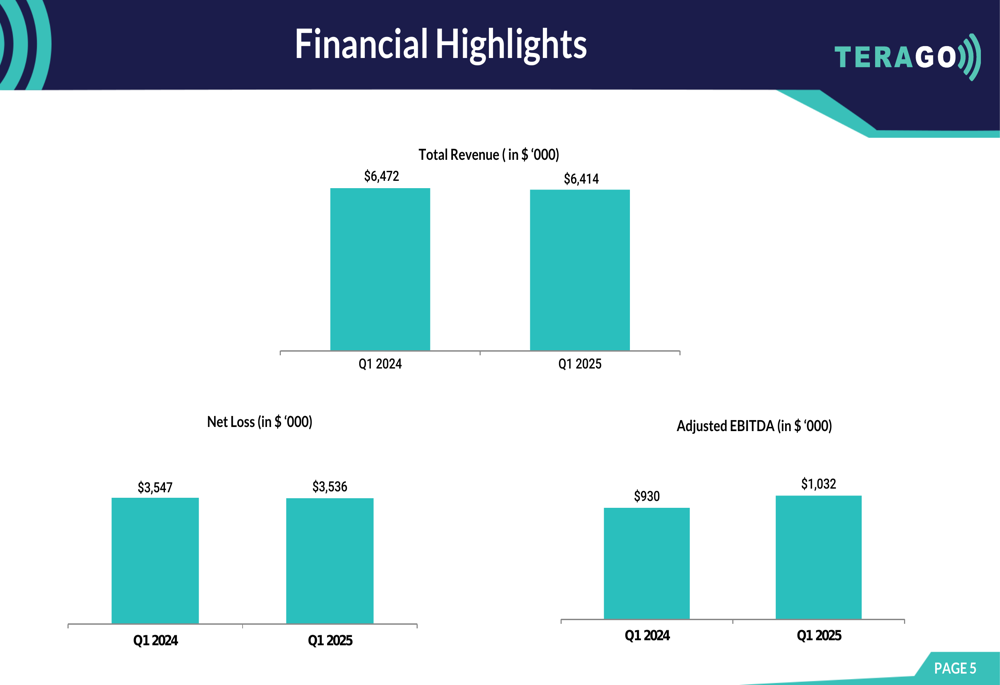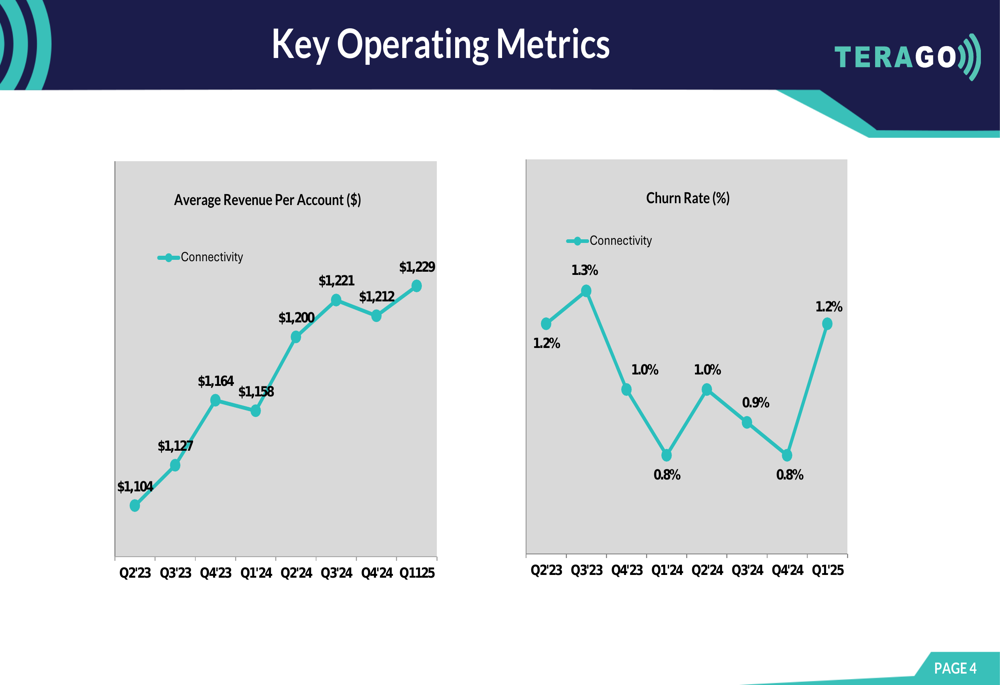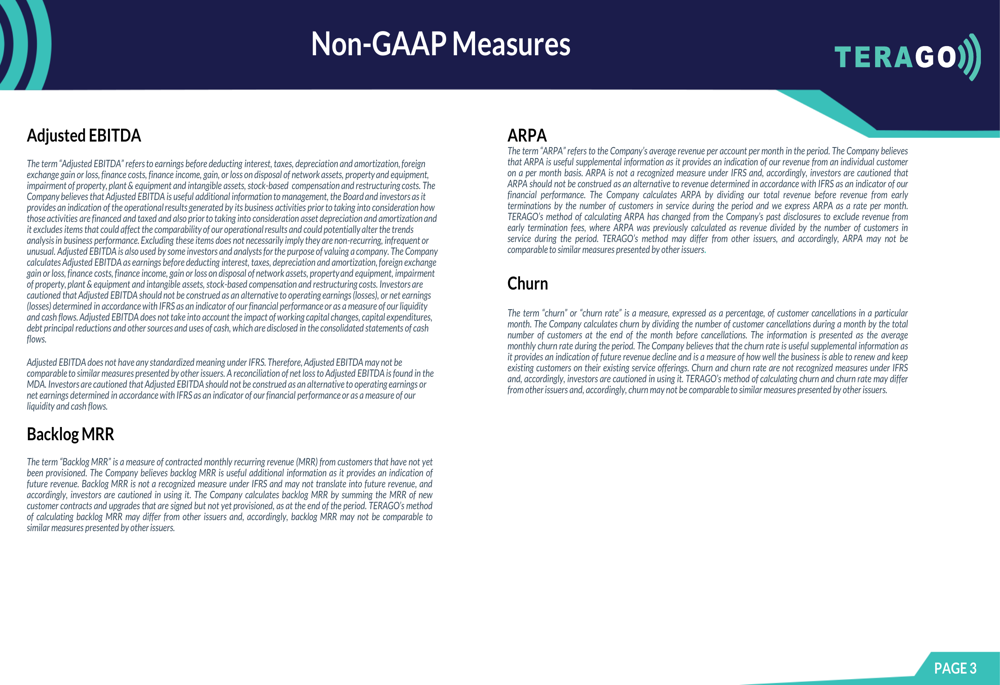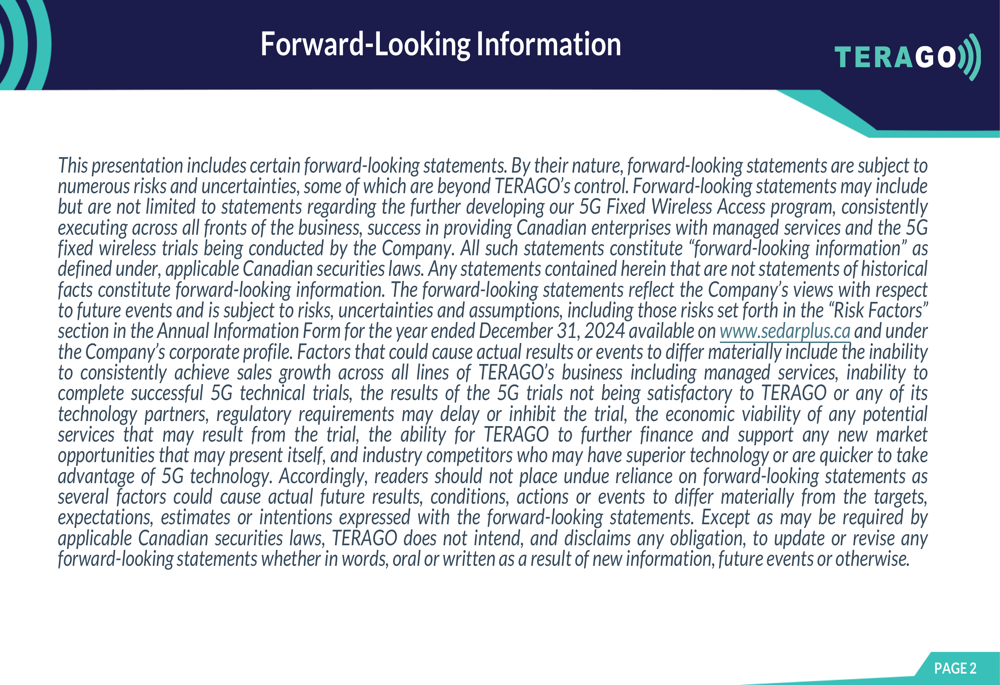Musk threatens Apple with legal action over App Store bias towards OpenAI
Introduction & Market Context
TeraGo Inc. (TSX:TGO) held its Q1 2025 Earnings Conference Call on May 14, 2025, presenting mixed financial results amid challenging market conditions. The Canadian connectivity and cloud services provider’s stock closed at $1.17 on May 13, down 3.31% ahead of the earnings release, and currently trades closer to its 52-week low of $0.80 than its high of $2.83, reflecting investor caution despite some operational improvements.
The company’s presentation highlighted continued growth in average revenue per account alongside improved adjusted EBITDA, though total revenue showed a slight year-over-year decline and churn rates increased from the previous quarter.
Quarterly Performance Highlights
TeraGo reported a marginal decline in total revenue, which decreased by 0.9% from $6.47 million in Q1 2024 to $6.41 million in Q1 2025. Despite this revenue dip, the company managed to slightly reduce its net loss from $3.55 million to $3.54 million year-over-year.
A notable bright spot in the quarterly results was the 11% improvement in Adjusted EBITDA, which rose from $930,000 in Q1 2024 to $1.03 million in Q1 2025. This improvement suggests the company’s cost management and operational efficiency initiatives are yielding positive results despite revenue challenges.
As shown in the following financial highlights chart comparing Q1 2024 and Q1 2025 performance:

Detailed Financial Analysis
TeraGo’s operational metrics reveal both positive trends and emerging concerns. The company has successfully increased its Average Revenue Per Account (ARPA) for connectivity services, showing consistent growth from $1,104 in Q2 2023 to $1,229 in Q1 2025. This represents an 11.3% increase over this period and indicates successful upselling strategies or a shift toward higher-value customers.
However, the churn rate, which had been improving steadily from 1.3% in Q3 2023 to a low of 0.8% in Q4 2024, increased significantly to 1.2% in Q1 2025. This 50% quarter-over-quarter increase in customer cancellations could signal competitive pressures or service satisfaction issues that warrant attention.
The following chart illustrates these contrasting trends in ARPA growth and churn rate fluctuations:

The company defines Adjusted EBITDA as earnings before interest, taxes, depreciation, amortization, foreign exchange gain or loss, finance costs, finance income, gain or loss on disposal of network assets, property and equipment, impairment of property, plant & equipment and intangible assets, stock-based compensation, and restructuring costs. This non-GAAP measure provides insight into TeraGo’s operational performance by excluding various non-cash and non-recurring items.

Forward-Looking Statements
TeraGo’s presentation included cautionary language regarding forward-looking statements, particularly concerning its 5G Fixed Wireless Access program. The company emphasized that such statements are subject to numerous risks and uncertainties, some beyond TeraGo’s control, and advised investors not to place undue reliance on these projections.

Given the company’s current stock price positioning near its 52-week low, investors appear to be taking a cautious approach despite the improved EBITDA performance. The increased churn rate may be contributing to this market hesitancy, as it could potentially impact future revenue stability if the trend continues.
While TeraGo has demonstrated ability to grow ARPA and improve operational efficiency as reflected in the enhanced Adjusted EBITDA, addressing the rising churn rate will likely be crucial for the company to achieve sustainable growth and improve investor confidence in upcoming quarters.
Full presentation:
This article was generated with the support of AI and reviewed by an editor. For more information see our T&C.
